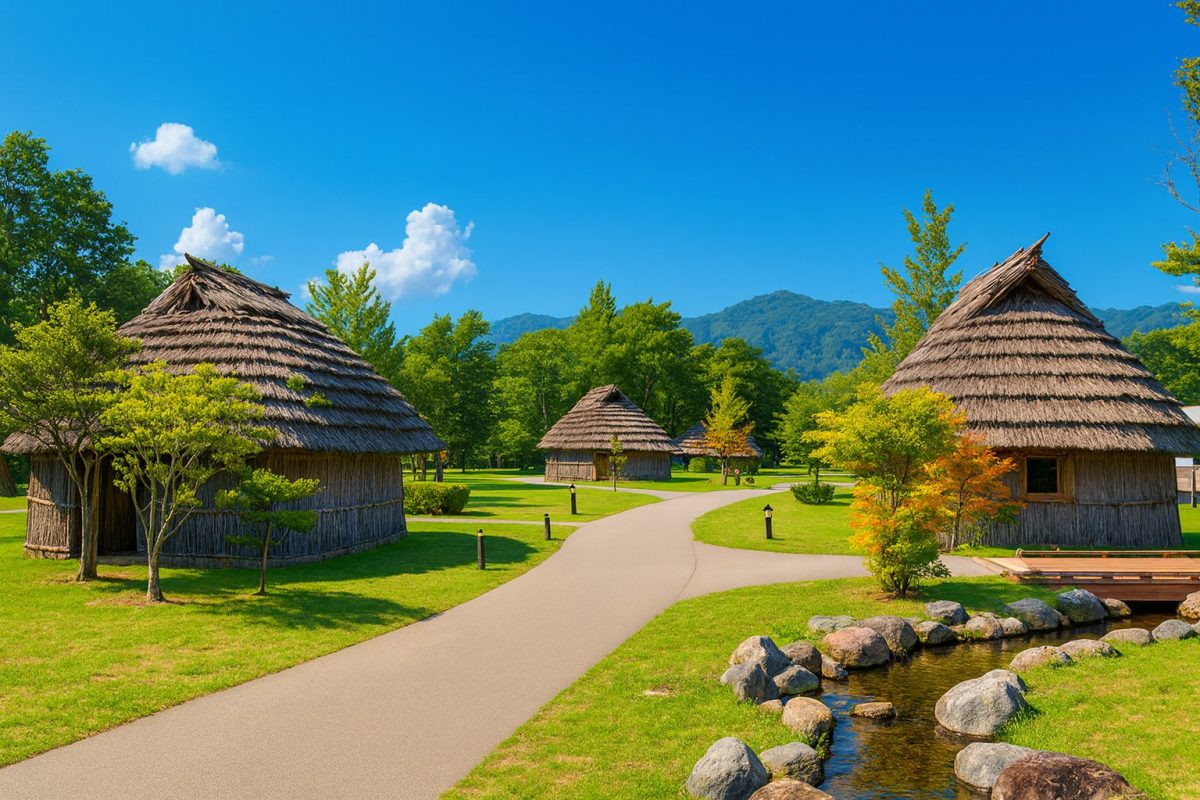| population | 4,438 peoples |
|---|---|
| area | 743.09 km² |
| population density | 5.97 peoples/km² |
Hidden in the heart of Hokkaido, Biratori Town is known as a central hub of Ainu culture and rich natural beauty. Its name comes from the Ainu word “Pira-uturu”, meaning “between cliffs.” Located along the western foothills of the Hidaka Mountains, the town is blessed with fertile lands carved by the Sarugawa River. Agriculture is the main industry, with rice, tomatoes, and livestock farming forming the core of the local economy. The renowned Biratori Wagyu beef and the sweet tomato brand “Nispa no Koibito” are among Hokkaido’s most famous local products.
The Nibutani district within the town is one of Japan’s most important centers of Ainu heritage. Here, the language, crafts, rituals, and traditions of the Ainu people are carefully preserved and passed down to future generations. Surrounded by pristine forests and flowing rivers, Biratori is a place where nature, culture, and history coexist in harmony, offering visitors a glimpse of Hokkaido’s timeless landscape.
CULTURE & TRADITIONS
Biratori is deeply rooted in Ainu traditions that have been nurtured for centuries. The Nibutani Ainu Culture Museum and the Kayano Shigeru Nibutani Ainu Museum serve as vital institutions preserving this heritage. Visitors can witness traditional crafts such as wood carving and textile weaving, and even participate in workshops that teach the deep connection between Ainu people and nature.
The town’s festivals are vibrant expressions of its cultural identity. Every spring and summer, the Suzuran (Lily of the Valley) Viewing Festival welcomes guests to a field of blooming white lilies, while in August, the “Chipu Sanké” (Ainu Boat Launch Ceremony) is held on the Sarugawa River to honor water spirits. Autumn brings the Biratori Sarugawa Festival, celebrating the harvest season. Through these events, Biratori residents continue to embody a philosophy of coexistence with nature and respect for their ancestors. Even in the long winter months, the people embrace snow and silence as part of the rhythm of life in northern Japan.
LOCAL SPECIALTIES
- Biratori Wagyu Beef: A premium local beef brand known for its fine marbling and tender texture. You can enjoy authentic Wagyu dishes at Biratori Onsen Yukara, a hot spring resort overlooking the Sarugawa River.
- “Nispa no Koibito” Tomatoes: Biratori’s signature tomatoes, famous for their natural sweetness and rich flavor. Fresh tomatoes and juice products are available year-round at local farmers’ markets.
- Biratori Ham & Sausages: Handcrafted from local pork, these hams and sausages are prized for their pure taste and minimal additives, showcasing the essence of Biratori’s agricultural craftsmanship.
- Ainu Woodcarving Crafts: The traditional Nibutani Ita (carved wooden trays) and Nibutani Attus (woven textiles) are nationally recognized as Traditional Japanese Crafts, featuring sacred spiral patterns called “Aiuushi.”
- Biratori Honey: The surrounding forests yield high-quality honey from acacia and birch flowers, known for its elegant aroma and deep natural sweetness.
ANNUAL EVENTS
- Suzuran (Lily of the Valley) Festival (Late May – Early June): Held at the Meyasu Suzuran Field, one of Japan’s largest colonies of wild lilies, open to the public during its full bloom season.
- Chipu Sanké (August): A sacred Ainu ceremony on the Sarugawa River, where hand-carved canoes are launched to express gratitude to the water spirits.
- Biratori Sarugawa Festival (September): The town’s main summer festival featuring local food, stage performances, and family-friendly activities along the river.
- Biratori Industrial Festival (November): A celebration of local produce, featuring tastings of Biratori Wagyu beef, agricultural products, and handmade goods.
- Nibutani Ainu Cultural Festival (October): A major cultural event that showcases traditional dance, music, and crafts from the Nibutani region, inviting visitors to experience living Ainu heritage.
ACCESS
- By Air: The nearest airport is New Chitose Airport. It takes approximately 2 hours by car via National Routes 274 and 237.
- By Bus: Buses operated by Donan Bus connect Biratori with Mukawa Station and Tomakomai City. These routes serve as the primary means of public access after the closure of the JR Hidaka Line.
- By Car: About 90 km north of Chitose IC on the Dōō Expressway, via Route 237 through Tomikawa. Driving is the most convenient way to explore local attractions.
- By Rental Car: Vehicles are available at New Chitose Airport or Tomakomai. The flexibility makes it easy to visit the Nibutani cultural area and natural sites throughout the town.
TOURIST ATTRACTIONS
- Nibutani Ainu Culture Museum – A cultural center preserving and showcasing the history, art, and traditions of the Ainu people. Interactive exhibits and workshops are available.
- Kayano Shigeru Nibutani Ainu Museum – Founded by Ainu scholar Shigeru Kayano, this museum houses priceless collections of Ainu artifacts and everyday tools.
- Nibutani Dam – A scenic dam on the Sarugawa River, offering picturesque lake views and walking paths through surrounding forests.
- Yoshitsune Shrine – Dedicated to the legendary samurai Minamoto no Yoshitsune, believed to have fled north to this region. A popular cherry blossom spot in spring.
- Biratori Onsen Yukara – A relaxing hot spring resort featuring open-air baths overlooking the Sarugawa River valley and mountain scenery.
